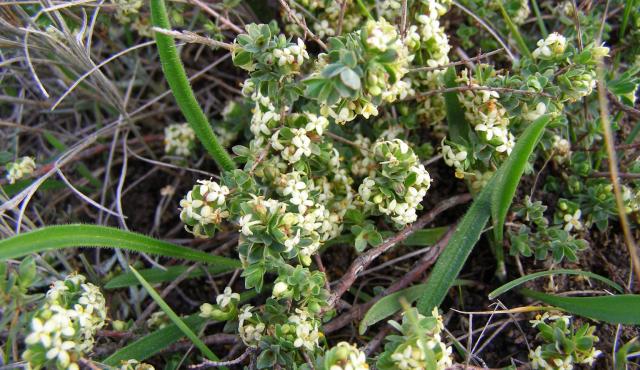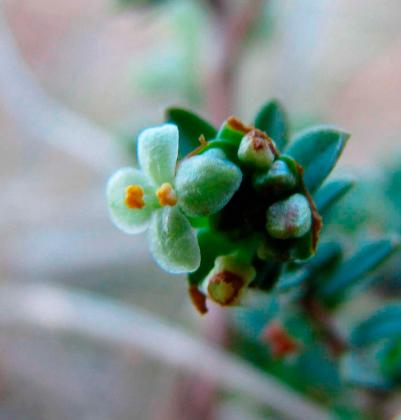A range of teacher professional learning programs will be developed to accompany the Biodiversity of the Western Volcanic Plains online outreach...




Spiny Rice-flower
Pimelea spinescens ssp. spinescens
Perennial. Provides nectar for butterflies. Habitat loss is the main cause for the decline of this endangered species. It is sensitive to herbicides that may be used to control weed species nearby.
| Details | Description |
| Type | Shrub |
| Group | Rice-flower |
| Identifying Characteristics | |
| Distinctive Features | The stems of older branches have spine-like tips. Leaves are opposite and decussate in this Pimelia species. |
| Life Form Group | Shrub |
| Life Form Codes | Small Shrub (SS) |
| EVC types | EVC 55_63: Higher Rainfall Plains Grassy Woodland |
| Native Status | Native to Australia |
| Taxonomy | |
| Phylum | Charophyta |
| Class | Equisetopsida |
| Order | Malvales |
| Family | Thymelaeaceae |
| Genus | Pimelea |
| Species | spinescens ssp. spinescens |

Distribution maps indicate current and historic locations where species have been sighted.
Source: Atlas of Living Australia
| Endangered Status | |
| DEPI Advisory List | Vulnerable |
| FFG Act | Listed as threatened |
| EPBC Act | Critically endangered |
| FFG Action Statement |
The conservation status of species is listed within Victoria and Australia.
The Department of Environment and Primary Industry (DEPI) Advisory List consists of non-statutory advisory lists of rare or threatened flora and fauna within Victoria.
The Flora and Fauna Guarantee Act 1988 (FFG Act) lists threatened species in Victoria. Under the Act, an Action Statement is produced for each listed species.
The Environment Protection and Biodiversity Conservation Act 1999 (EPBC Act) is the Australian Government’s key piece of environmental legislation, listing nationally threatened native species and ecological communities.



